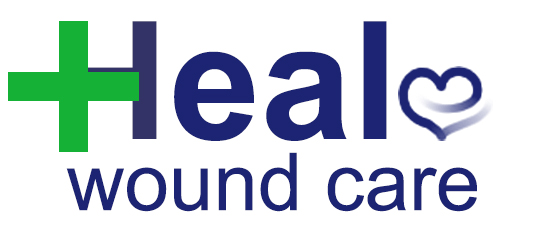Clean & Aseptic Technique
Dressing a wound
If dressing your own wound at home with a sterile product purchased at a local pharmacy, life is simple:
Gather supplies and set them on a clean surface.
Wash your hands.
Wash the wound, clean and dry the skin.
Open and apply the dressing without touching wound contact layer.
Discard used supplies and wash hands.
EASY!
Not so easy if:
You are doing someone else’s wound care and need to wear gloves.
The dressing needs to be cut.
The wound is deep and requires irrigating with a syringe (eye protection needed).
The wound requires probing or packing.
The dressing is complex or fiddly.
A bandage (wrap) is necessary.
As a professional dressing a wound, there is the added issue of cross-contamination from both the clinician and the previous client seen. Additionally, there is a need to protect the nurse from infections that the patient may have and contamination from the wound to the environment and equipment, and vice versa.
The purpose of a good dressing technique is to minimize contamination risk by wearing appropriate personal protective equipment and keeping to the principles of asepsis, even when using a clean technique.
The differences between the two techniques are considerable, but essentially for a clean technique, clean hands or clean gloves are used instead of sterile gloves. Some products such as the sterile field between the patient and clinician are clean, not sterile, as might be scissors. Clean rather than sterile gauze may be used for cleaning the wound, and a dressing that is cut in half may be kept for the next dressing change.
What is accepted as a clean technique in a patient’s home may not be deemed sufficiently clean enough in the hospital environment. For example, a moist dressing (Adaptic) might be cut into four and used over the course of a week by a client at home. In the hospital environment, this is less acceptable due to the differences in organisms present in hospital (multi resistant strains) and the multiple users performing the dressing; also, a moist dressing is more likely to pick up contaminants.
Teaching dressing technique to a patient or caregiver in the home needs to be kept to three headings with less than five steps under each. Hand washing before and after is a must; using gel and changing gloves between the main headings is mostly unnecessary.
Before starting
Organize supplies onto a clean surface, wash hands, open up items to be used (listing items needed can be helpful).
Cleaning the wound
Showering is easiest, wound sprays are easy.
Clean and dry surrounding skin.
Apply skin prep, let it dry.
Placing the dressing
Avoid touching the wound contact layer.
Fully secure with tape.
Principles of asepsis and clean dressing technique
Where a more aseptic/sterile procedure is needed (in the hospital environment), replace the word “clean” below (in bold text) with “sterile.”
The wound, any supplies, and the environment should not be contaminated by each other.
Wash hands before starting a procedure and decontaminate before/after glove changes.
Contamination of the wound is minimized by not touching it.
Fresh clean gloves are required if it is necessary to directly touch the wound. These gloves should not contact anything other than the wound or the sterile products being used on it.
Contamination of the local environment and supplies is avoided by organizing the procedure to ensure that anything coming into contact with the wound does not contact jars, bottles, tubes, bedside table, or supplies to be kept for use at a later date.
A clean, non-porous material needs to catch any run-off from the wound during cleansing and should be replaced with a clean, dry field before dressing placement.
The outer surface of the dressing should not be touched by gloves used to clean the wound. This applies to tape and any wraps used for the dressing.
Fresh clean gloves should be worn to tuck/pack a primary dressing into a wound.
Providing a primary dressing is dry and not contaminated, it may be kept for the same patient’s next dressing change. This means it should be cut with clean scissors, stored in the original package, dated, and fully secured in an appropriately sized bag (some hospitals and other facilities allow this, and though acceptable it is not classified as an aseptic practice). Generally, moist dressings (Xeroform, Adaptic Hydroferra blue) should not be cut and used at a later date in the hospital environment (it may be acceptable in homecare).
In a highly contaminated wound, clean gloves may be used to handle moist gauze while cleaning debris from the wound (in the ER, cleaning stool from a sacral wound).
All dressing supplies should be stored off the floor, away from heat/light, and secure from pets. Gloves and supplies used for wound care should not be stored in the bathroom or under a sink.
Download resources
Handout: Wound care dressing procedure
References
Kent DJ, Sardillo JN, Dale B, Pike C. Does the use of clean or sterile dressing technique affect the incidence of wound infection? J Wound Ostomy Continence Nurse. 2018;45(3):265-9.
Wound, Ostomy and Continence Nurses Society (WOCN) Wound committee; Association of Professionals in Infection Control and Epidemiology, Inc (APIC) 2000 Guidelines Committee. Clean vs. sterile dressing techniques for management of chronic wounds: a fact sheet. J Wound Ostomy Continence Nurs. 2012;39(2 Suppl):S30-4.


